The Redfern Gallery, 20 Cork Street, Mayfair, W1S 3HL is presently a great place to get lost. Until 9th December, it is the venue for a fabulous exhibition of collages by the late Francis Davison, a master of the art of papier collé or torn paper ‘paintings’. This is a rare chance to see such a spectacular display of his work all gathered together in one special place.
To step inside is to enter a garden of dancing shapes and colours, to be drawn in like a bee
buzzing intoxicatedly from flower to flower, it’s easy to lose yourself amidst all this beauty.
Francis Davison was a reclusive artist who never actively sought the limelight. His work was not often exhibited during his lifetime. His one major exhibition was in 1983 at the Hayward Gallery, when he preferred his work to appear anonymously without titles. His untitled collages are now referred to by reference numbers; this one is D-277, 1972.
No Number 2 (H-23), 1982-84
Francis Davison is, in my estimation to date, the pre-eminent British abstract artist of the second half of the 20th century.
He worked in isolation, within the passionate confines of his marriage to the artist Margaret Mellis. They kept poultry on their smallholding to make a living. Gradually, over many years, he developed his extraordinary language of large collage.
He never added pigments, but only used the given colours of the paper. What look like brushmarks are actually the remains of previously glued, torn-off sheets. He increasingly recycled old collages, for he worked incessantly, in the small front room of their house which he used for a studio, hardly selling anything, making his work richer and richer and bigger and bigger.
Davison was a modern-day equivalent of the illuminator of the Lindisfarne Gospels. I know of no-one else who could make hues, tones and shapes dance together in the mind’s eye in such a life-enhancing way, in a purely abstract equivalent of song. The collages may look thrown together, but they’re not. The colour-space relationships are absolutely exact. Every nick and tear tells in the raw-ragged, furious, utterly unsentimental but glorious beauty he gave to the world.
Julian Spalding
D-300, 1971
Davison’s collages are remarkably painterly in their use and application of colour. It sometimes takes an effort to recall that all these marks, shapes and groupings are made from nothing other than torn paper. The lines and blocks of colour so resemble brushstrokes and painted dispositions that the eye can be briefly tricked – particularly where Davison has torn away bits of paper previously stuck down, leaving only a trace or echo, like a smear of pigment.
Davison was a master of the edge: not simply in the ragged outside edges of his collages which, while remaining roughly square or rectangular, frequently take on a new and radical dynamic through an unexpected rhythm of projections and protrusions matched by gaps and absences; but also within the collage, as different edges of paper are lapped and abutted in lyrical and often quite complex patterns and layers.
Andrew Lambirth
C-18, 1965-71
B-38, 1963-65
I think Francis’ method of work was a trance-like dance. It was in essence anything – completely free from restriction, certainly free from thinking. The form that this took is what we see as his collages. A very singular attribute to paper is that it’s thin, it’s possible to work in layers without it looking like that. Francis’ method was working over and over, always keeping an eye on what was revealed underneath by what he was cancelling out and adding to, on top. Contrary to expectation, overlaying simplifies, both cluttering and at the same time dispersing elements. In the final stage each bit of paper had to be that size, that shape, that colour and in that place, because every bit was dependent on every other bit, otherwise what had led up to it would not make sense.
Telfer Stokes
B-8, 1963-65
C-1, 1970
Besides the European, English and American artists with whose work Davison’s can be fruitfully compared, reference should also be made to African textiles. In particular, the marvellously free improvisations on African bark cloth, a potent mixture (like Davison’s) of the organic and geometric, and the distinctive patterns of Kuba cloth from the Congo, made from raffia palm leaves.
Andrew Lambirth
I’d been round and around the exhibition tying myself in knots, making a beeline for my favourite only to find another round the next corner. And then I saw it. Standing at the counter to purchase a catalogue I decided that if I could give a new home to any of these pieces it would have to be this one.
D-185, 1971
This was the one I carried away in my head. And then all the rest. I saw their echoes as I walked home; fallen leaves laid out on the pavement, eroded traces of painted road markings, a billboard palimpsest of torn posters. And I remembered a long ago visit to a seaside studio in Southwold.
Francis Davison: Collages / The Redfern Gallery
※
…his work, sometimes with breathtaking precariousness, managed to encompass and equate the microcosm of the inner life of the individual human being, in all its shifting states, and the macrocosm of the workings of the universe we inhabit, from our experience of the immediate landscape to our grappling with the vast entirety of existence.
Michael Harrison
※
If you enjoyed this blogpost you might also like to see Postcard From Southwold.







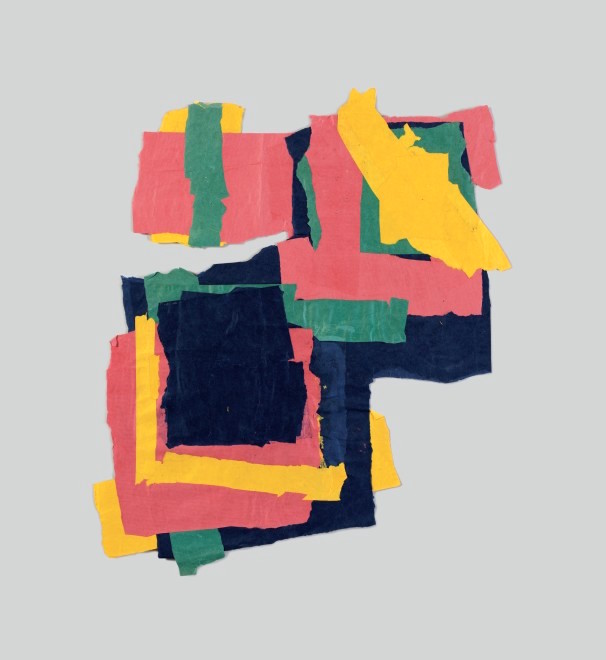

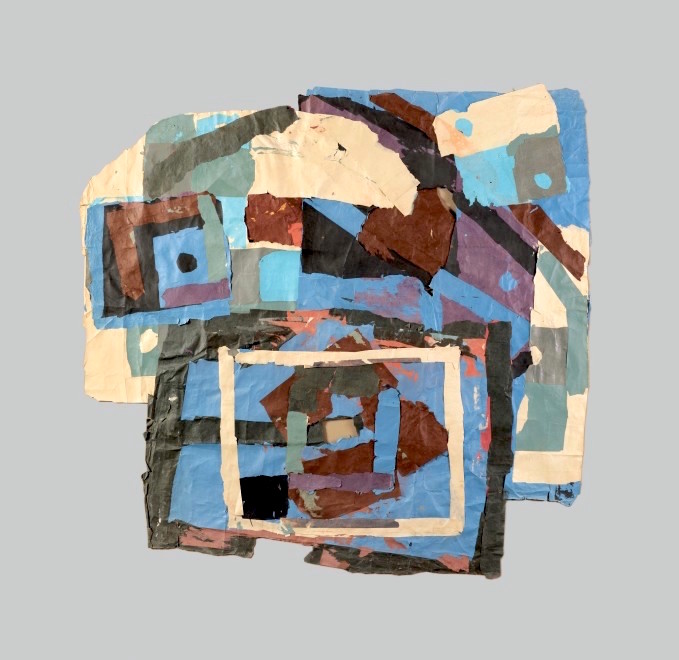





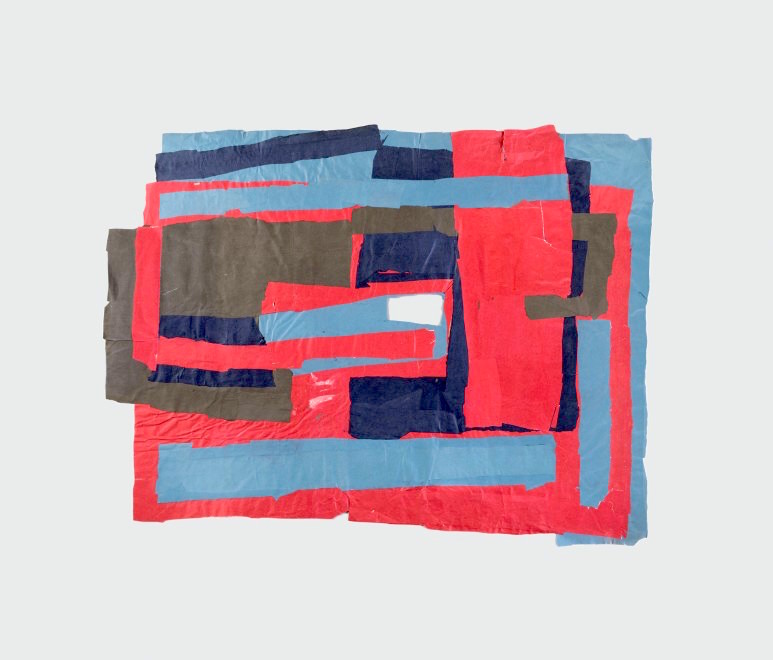


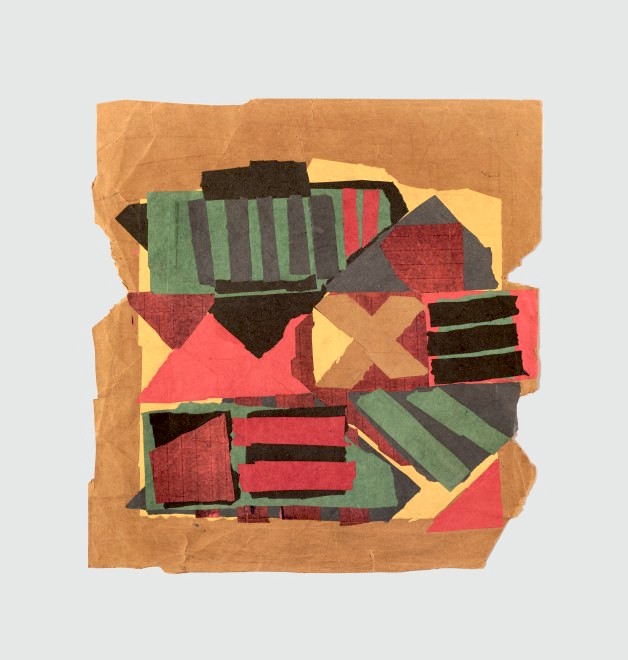














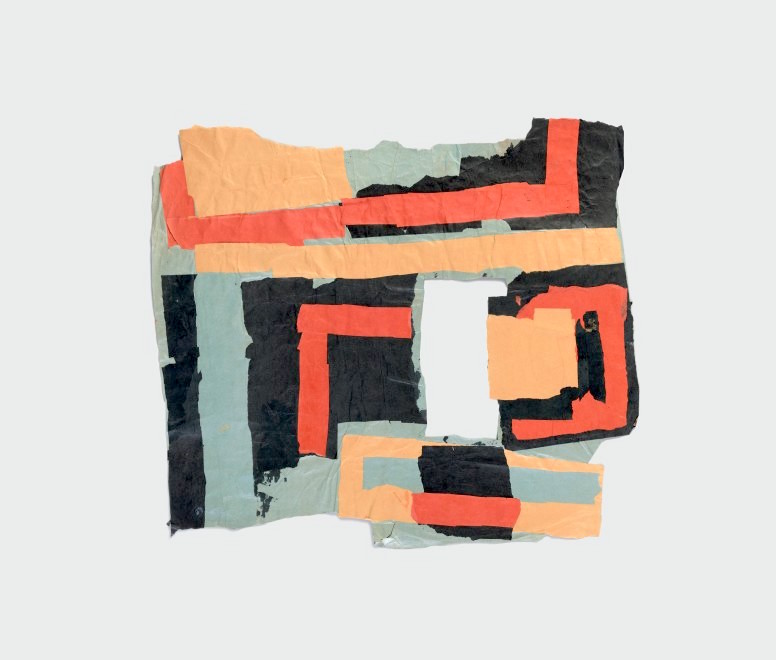

These are wonderful Chris. I see rhythm and music when I look at them. Must try to catch the show before it ends. Best Wishes.
Yes, they are so musical. And they dance around the walls. I hope you can get to see the exhibition.
In the early 1980s I had the good fortune to work with Michael Harrison curating a touring arts council exhibition. “Alive to it All” as Joanna Drew wrote – For Baudelaire genius was “nothing more than childhood recaptured at will.” Francis Davison was an artist central to the notion of the show. One foggy morning Michael and I drove in his 2CV from Oxford to Suffolk. As we drew near Southwold the sunlight defused in the mist was Mary Potter-like. We had come to see Francis’ work. There in the front room of the cottage was a stacked pile of Francis Davison collages. Layer on layer of them all in a tiny room. I now do not recall Francis being there. Margaret Mellis was though. Working on this exhibition was formative in my finding what kind of artist I was. The mysterious collages of Francis were important for me.
My links with him were oblique. My grandfather George Walton an arts and crafts architect had designed many buildings for George Davison, Francis’ father including a memorial chapel in Antibes at the villa Francis lived in as a child. I also recall he and Margaret coming to tea with me in Oxford. A very quiet man not telling much of himself. Is reticent the word? I was not aware of the family connection at the time.
“Alive to it All” toured the country during 1983. Each gallery presented a challenge as the sequence of images, how they hung, which neighbours told on how one saw them. So the meaning of the show changed subtly venue to venue. I got to not only know these collages but to love them. They stay in the mind. Maps of some present but other landscape. Magic. Michael had one in his home. You get to know a work if you see it regularly over the years. Francis’ work only gets better.
In 1982 I was working for the Arts Council and I came in a van to Southwold to collect the work for the Hayward Gallery exhibition. I was the driver’s mate. I suppose I must have met Francis on the doorstep but I don’t think there was any conversation. His work was a complete surprise to me. I’m sure I said ‘These are fantastic!’ but then just got on with the job of loading the van. Sadly, by the time of his exhibition I had been sacked (I was a terrible timekeeper, up all night painting, I often overslept in the morning) so I didn’t get to see the Hayward show. It was only later that I really discovered his work and found I’d also been trying something similar in my own paintings, but they never came close to his virtuoso performances.
If I’d hung on a bit longer at the Arts Council I might have worked with you on Alive To It All! It looks like it was a great collection of artists. Michael Harrison later put on a Francis Davison exhibition at Kettle’s Yard in Cambridge. I hope you’re able to see this exhibition at the Redfern Gallery.
The chapel
Dear,
I am myself a collagist/painter and I admire the work of Francis Davison. Maybe this is a strange question but I ask myself where I can find colored paper as he used to work with. Any idea?
Thx.
I think he stockpiled papers, none of it new when he used it. Maybe better to scour wastepaper mills than art supply shops.
Thanks for commenting. I thought I read somewhere that he found the paper in a shop in the UK…
One more question.
Was he working on paper or canvas or both? I would like to see his work live once in my life.
Fred Delameilleure
Ostend
BELGIUM